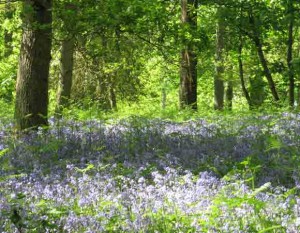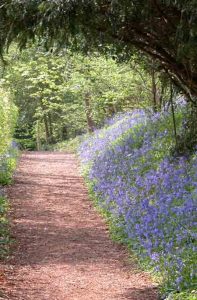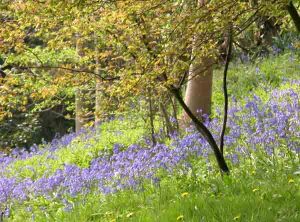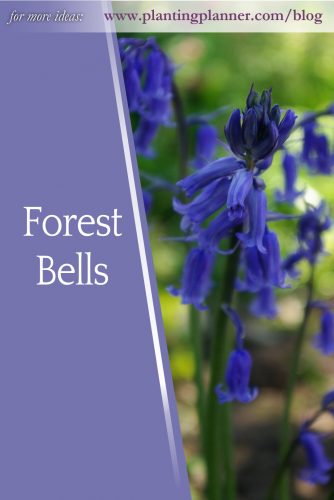from The Weatherstaff PlantingPlanner – intelligent garden design software
The ancient bluebell woods in April and May are a quintessential feature of the British landscape. Dappled sunshine. The fresh spring green of the returning leaf canopy. A purple haze, colour-washing the woodland floor.
We were delighted to discover wild bluebells springing up in our hedgerow when we moved to our new home. The elegant, lavender-blue flowers are narrowly tubular, their petal tips recurving like the hat of a fairy elf. Sweetly scented, they are carried on one side of the flowering stem only, weighting the slender stem down so that it arches at the top.
It is the slight and stately stem
The blossom’s silvery blue
The buds hid like a sapphire gem
In sheaths of emerald hue
‘Tis these that breathe upon my heart
A calm and softening spell
That if it makes the tear-drop start
Has power to soothe as well.
In spring, bluebells can be found in many of the woods of North East Europe and they are a common sight in much of Britain and Ireland. They are glorious at the moment in the Forest of Dean and the scent on the breeze is all-pervading. However, the species is globally threatened and has greatly declined over the past half century.
And azuring-over greybell makes
Wood banks and brakes wash wet like lakes
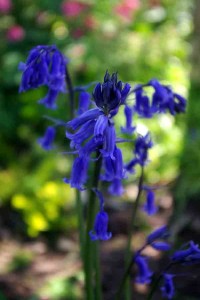
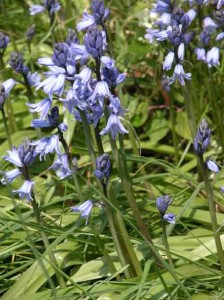
The common bluebell – Hyacinthoides non-scripta – is protected in the UK under the Wildlife and Countryside Act 1981 but it is now under threat from hybridisation with the Spanish bluebell – Hyacinthoides hispanica, which is commonly planted in gardens.
When the Spanish bluebell escapes into the wild, it quickly hybridises with the native bluebell. Both the Spanish bluebell and its hybrids will out-compete the more delicate common bluebell.
Pin for later
For more gardening ideas, click here to follow the Weatherstaff PlantingPlanner on Pinterest.


